Back in the USSR
In 1949, each family arriving in Birobidzhan, the Soviet Union’s Jewish Autonomous Region, was promised a cow. But since no cows could be procured, the miserable arrivals were instead granted “certificates of cowlessness.” Now officially cowless, these Jewish settlers were entitled to Soviet economic aid. But there was no aid to be had, just as there were no cows, just as there was no autonomy in Birobidzhan. Today there are barely any Jews. The title of Masha Gessen’s latest, Where the Jews Aren’t: The Sad and Absurd Story of Birobidzhan, Russia’s Jewish Autonomous Region, thus aptly reflects the truth behind the chimera of Stalin’s cynical remedy for Jewish homelessness. Yet Gessen’s slim volume offers up its own phantom presence: Birobidzhan, that end-of-the-world place in far eastern Siberia, is not really at the center of her book.
Gessen instead uses the bizarre history of Birobidzhan to outline the biographies of Yiddish author David Bergelson and historian Simon Dubnow. That Bergelson emerged as Birobidzhan’s most significant literary advance-man despite living there only briefly makes the farce of the Jewish Autonomous Region and the fate of its Jewish supporters that much crueler. Gessen, a journalist, made her reputation as a bold writer who pulls no punches. Yet in Where the Jews Aren’t she reveals a surprising patience for the fickleness of Bergelson and the failures of his later work.
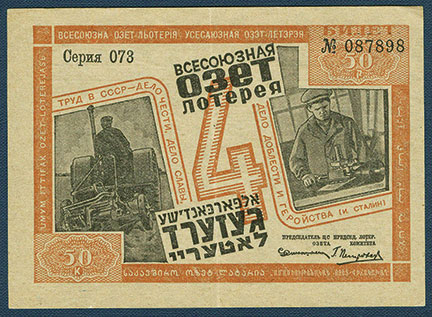
Renowned as one of the premier stylists of Yiddish modernism, Bergelson has received a great deal of scholarly attention in the last two decades. The story of his execution along with several other important Jewish authors (including poets Leyb Kvitko and Peretz Markish) during a brutal 1952 purge of Stalin’s “enemies” has become a touchstone for Jewish academics and writers. Nathan Englander, in his short story and play “The Twenty-Seventh Man,” and Elie Wiesel, in his novel The Testament, reimagine this horrific chapter of Soviet Jewish history that has come to be called “The Night of the Murdered Poets.” Rather than a cautionary tale of the costs of compromised principles, of obeisance to power, and of dreams founded on denial, it has become a contemporary Jewish intellectual’s martyrology, a roll call of the destruction of Yiddish culture.
Yet Gessen’s book oddly offers little incentive to those unfamiliar with Bergelson or his work to actually read his novels, or even to sympathize with his shifting allegiances. She describes him “filing lovely happy dispatches on life in the Soviet Union” that were “long on red banners and grand pronouncements and short on the detail that had once marked Bergelson as a great writer . . . as though Bergelson had been writing with his eyes and ears shut.” Readers learn that Bergelson feuded with Forverts editor Abraham Cahan over money, abased himself before Stalin’s minions in preparation for his Soviet homecoming in the 1930s, and stumped for the workers’ paradise despite leading a comfortable middle-class life. Bergelson was well-rewarded for services rendered to the state. He lived in the center of Moscow in a roomy apartment and was granted special permission to own property. Peretz Markish noted at the time, perhaps with some jealousy, that “Bergelson lives like a count . . . and he is growing as broad as he is tall from the proud pleasure of it!” Gessen appears bemused rather than outraged by Bergelson, a man who “had willingly and willfully stayed in the propaganda service of a state that had not only murdered some of his friends but was now, through its new alliance with [Nazi] Germany, enabling the murder of his people.”
Gessen refrains from an analysis of Bergelson’s character, preferring elliptical observations. She writes that Bergelson went “to his death . . . trying to square the circle of Jewishness in a world that did not want Jews, protecting the seeds of a religion he did not practice, and insisting on his right to keep alive a dying language.” Should readers be awed by Bergelson’s complexity? Frustrated by his opacity? Puzzled by his inconstant nature? The refusal to judge one’s characters may be a strength for novelists, but for biographers of men, women, and ideas such delicacy scans as reluctance, or worse, incapacity. For all the details we get of Bergelson’s life, he remains strangely peripheral as the chronicler of Birobidzhan. As a protagonist, he is never much in focus, nor for that matter is the physical landscape of Birobidzhan.
A third of the way through the book readers finally encounter Birobidzhan through Bergelson’s eyes. “All around chains of mountains rose up, high and rounded, their summits mantled in peaceful blue clouds,” he exulted in 1932, “[and] myriad rivers [were] gleaming in the sun, valleys narrow and wide, expanses of taiga and mixed fields, and all of this taken together was the land that the authorities had allocated for the working Jews.” Gessen offers scant reportage of Birobidzhan herself. She contrasts Bergelson’s wide-eyed praise for the region’s natural beauty with descriptions of her travels along empty avenues, through decrepit buildings, and into the depths of dusty libraries housing Yiddish volumes that no one can read. Perhaps the lack of vivid description of Birobidzhan today allows Gessen to demonstrate that the actual place—climate, vistas, topography—was never as important as its symbolic value.
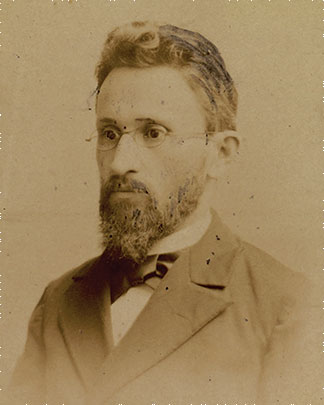
Another major character in Where the Jews Aren’t, Simon Dubnow, receives less attention than Bergelson yet appears as the more sympathetic figure. Dubnow emerged in the late 19th and early 20th century as the most important advocate of diaspora nationalism, an ideology that promoted the reinvigoration of Jewish social and cultural institutions as a means to consolidate minority national identity within multinational states. He was equally well-known for his comprehensive history of the Jewish people, scholarly studies of Hasidism, and inspiring his pupils to form the YIVO Institute for Jewish Research. Gessen writes that she recognized Dubnow’s “concept of a secular Judaism as the basis for national identity . . . as the foundation of my own Jewishness.” Scholars may quibble with Gessen’s reductionist appropriation of Dubnow’s positions, but she performs a notable service for her general readership in bringing Dubnow into contemporary conversations about Jewish peoplehood.
She identifies Dubnow’s formulations of diaspora nationalism as the ideological genesis of Jewish settlement in Birobidzhan. While this may be correct in outline, Gessen overlooks a more concrete point of origin. Anarchist theorist Petr Kropotkin conducted path-breaking surveys of the geography and geology of the Birobidzhan region in the 1860s. Years later, during his long exile in England, Kropotkin told Israel Zangwill that the area could be transformed into a Jewish territory. Kropotkin had suggested the region to Zangwill as early as 1906, just after the prominent Anglo Jewish writer had abandoned the Zionist Organization and launched the competing Jewish Territorial Organization (ITO). Zangwill then echoed Kropotkin in the immediate aftermath of the 1917 revolution, insisting that Siberia contained a “mighty land of the future” suitable for Jewish self-government. Surely this documented connection between Kropotkin, the early Soviet Union, and Jewish nationalist efforts in the diaspora deserves some mention in a discussion of the origins of Birobidzhan.
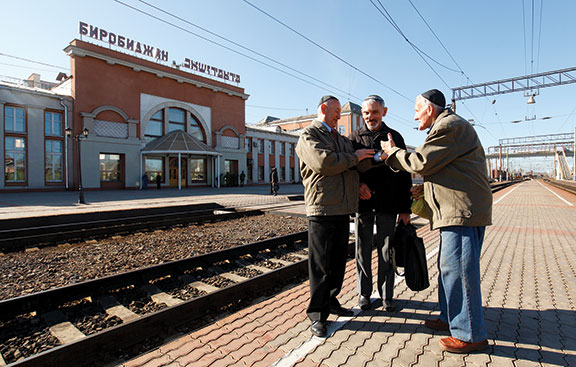
This is not to say that Birobidzhan should be considered a Territorialist project. Territorialist sympathizers remained skeptical of the Jewish Autonomous Region even as the first false, glowing reports of Birobidzhan emerged in the 1930s. They were right to remain aloof. As Gessen notes, apparatchiks promoted the region for Soviet economic and security reasons, not for the sake of Jewish welfare or Yiddish culture. Here Gessen misses an opportunity to contrast the sad and absurd story of Birobidzhan with failed Territorialist schemes of the 1930s and 1940s, not to mention the success of Zionism in this period.
Dubnow, whose appraisal of Zionism was never more than lukewarm and whose rejection of Marxism was unequivocal, emerges early on as Gessen’s hero. He seems to have had a knack for knowing when to emigrate during the dislocations of the first decades of the 20th century, much as Gessen’s parents, and later the author herself, had known when it was time to flee the Soviet Union and Putin’s resurgent Russia. But Dubnow, the learned historian, could not outrun the savagery of modern history. He was shot and killed at the age of 81 by German soldiers on the outskirts of Riga in 1941. Bergelson lived into the postwar era thanks in part to his propagandizing for Birobidzhan, then he too was murdered. Losing “any sense of home,” Gessen writes, “is essential for developing an instinct for knowing when it’s time to run.” Then again, the lack of a sense of home did not spare the heroes of Gessen’s book from meeting violent deaths.
In a book so concerned with geography as fate, it is unfortunate that readers travel with Gessen to Birobidzhan only in the last 20 pages of her book. There we follow the author in 2009 as she paces through “brutally cold” museums, navigates Kafkaesque archives, wanders slums populated by “inebriated creatures of indeterminate age and gender,” and stumbles through culinary misadventures: the schnitzel à la Birobidzhan is a pork cutlet and the gefilte fish is served reheated. Gessen’s journalistic style becomes strikingly vivid when she introduces readers to the last voluntary Jewish settler of Birobidzhan, 90-year-old Iosif Bekerman. The pugnacious Bekerman, “his lower lip . . . permanently rolled out, shiny and purplish,” refuses to cover his head to enter the one synagogue in the Jewish Autonomous Region. He praises his granddaughter for marrying a non-Jewish man and for changing her name to obscure her origins. A “tiny shell of an old man,” Bekerman was the only native Yiddish speaker then residing in Birobidzhan, and Gessen finds only a single Yiddish volume in the “national collection” of Birobidzhan’s Sholem Aleichem Library.
In the book’s Epilogue, Gessen describes her émigré family’s final day on Russian soil in 1981. She recalls her apprehension and excitement as their plane waits on the tarmac, and as she stares out the window she asks herself: “Did the West actually exist?” Those who know the story of the Jewish Autonomous Region may ask themselves whether it too ever really existed except in the imagination, whether cynical or noble, of its proponents. How could so many people believe that Jewish culture would flourish in the harsh, easternmost reaches of the Soviet Union? Bergelson’s Yiddishland never came to pass, nor did Dubnow’s vision of diaspora nationalism. Given the fate of Dubnow and Bergelson—and of Birobidzhan itself—one can conclude that for Gessen home is not where they have to take you in; rather, the idea of home is what Jews must not be taken in by.
Suggested Reading

A Measure of Beauty
The Israeli hip-hop band Hadag Nahash blend the many strata of Hebrew language.

Wartime Diary
Since October, in Gaza, hundreds of thousands of people are on the move in the rain, mud, and fire. They go from one space that is not home to another space that is not home; none of them safe. Where will they shelter? To what can they return?
At Professor Bachlam’s
A lost chapter from Agnon's final, classic novel Shira, translated here for the first time.
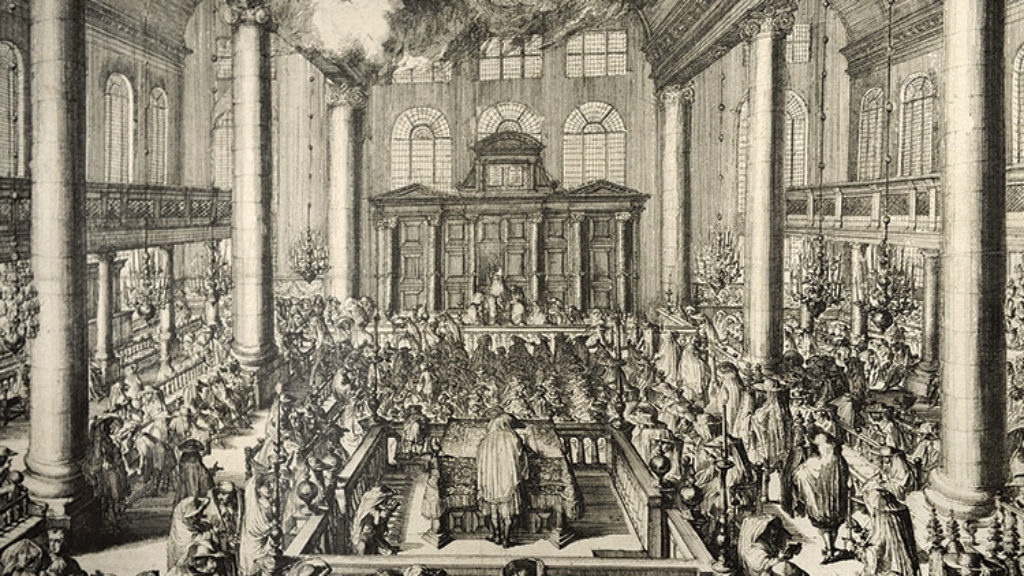
Who Tried to Kill Spinoza?
According to early biographers, somebody tried to kill Spinoza on the streets of Amsterdam. Is the story true, and, if so, who were his attackers?
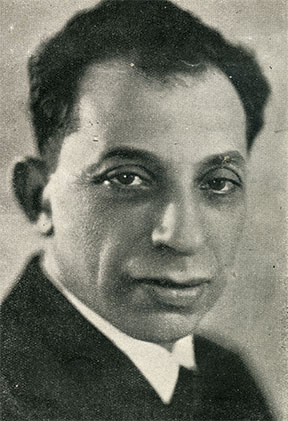
Comments
You must log in to comment Log In